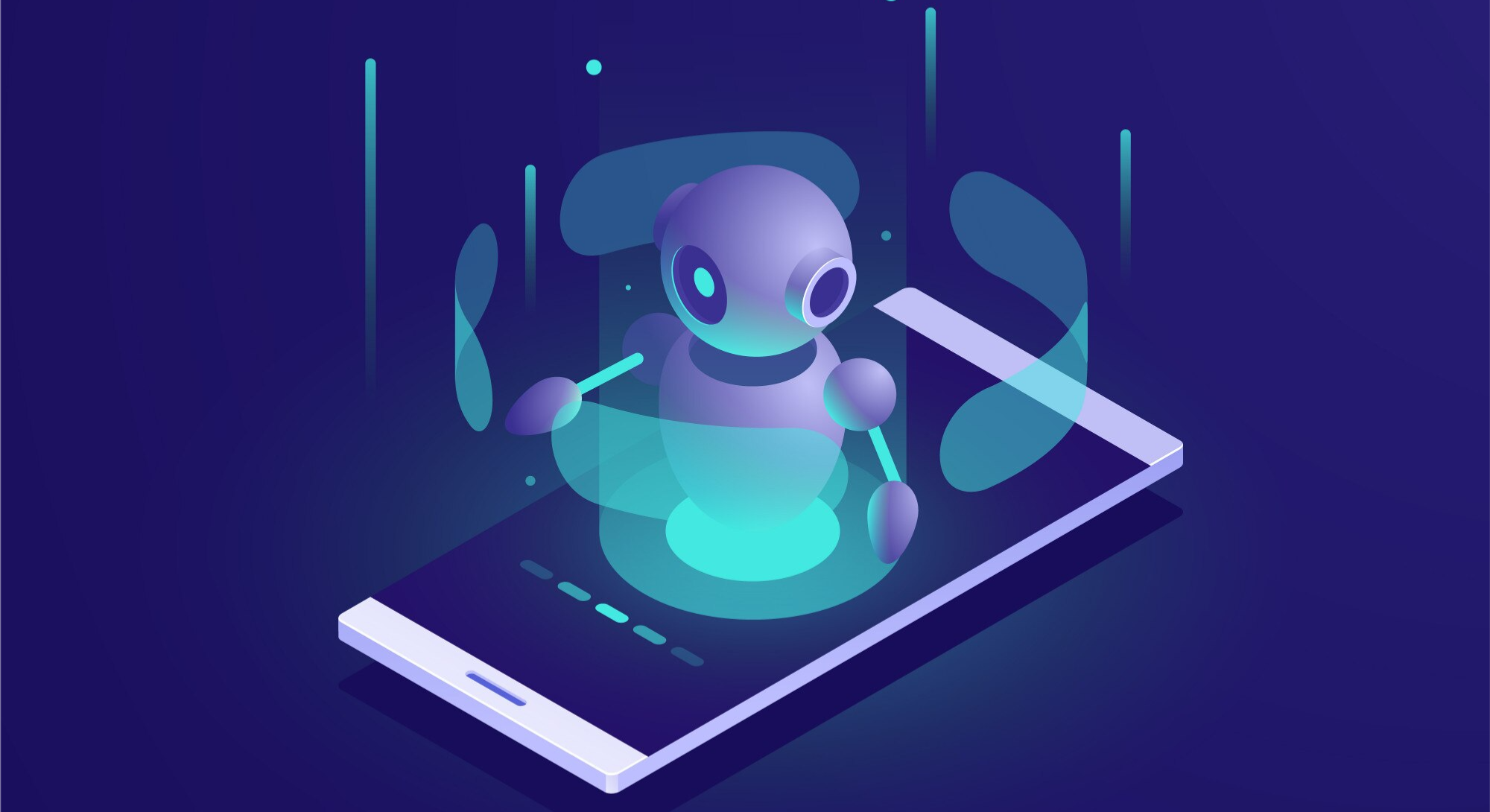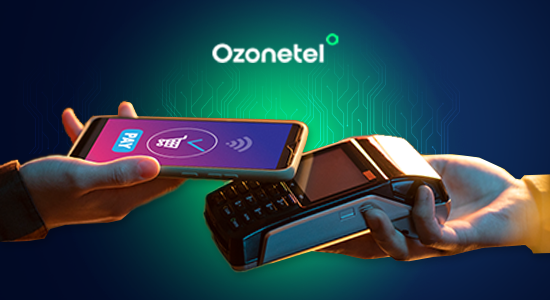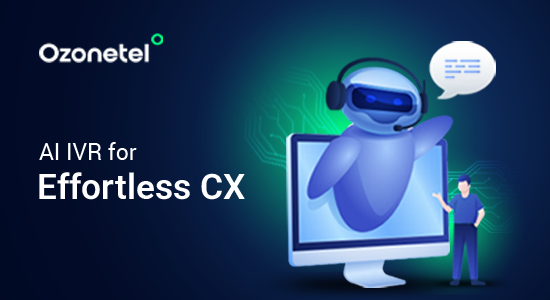- Resources
- What are AI Voice Agents? A Complete Guide
What are AI Voice Agents? A Complete Guide

What are AI Voice Agents?
AI voice agents are software tools that use artificial intelligence (AI) to understand and respond to human speech. They can handle tasks like answering questions, processing requests, and even assisting with customer service, all through voice interactions.
These voice agents are powered by natural language processing (NLP), allowing them to understand and generate human-like conversations. They are commonly used in voice assistants like Siri, Alexa, and Google Assistant, but they also play a crucial role in business applications, such as call centers and smart devices.
In this article, we will explore:
- 1.What are AI Voice Agents?
- 2. Importance of AI Voice Agents
- 3.Technologies Involved in AI Voice Agents
- 4.How AI Voice Agents Work
- 5. Benefits of AI Voice Agents
- 6. Use Cases of AI Voice Agents
- 7. How to Implement AI Voice Agentss
- 8.Mistakes to Avoid While Implementing AI Voice Agents
- 9.Future Trends in AI Voice Agents
What is Employee Experience?
Employee Experience (EX) is the overall perception employees have of their journey within an organization. It encompasses every interaction and touchpoint, from recruitment and onboarding to daily responsibilities, support systems, and eventual offboarding.
What are AI Voice Agents?
AI voice agents are software tools that use artificial intelligence (AI) to understand and respond to human speech. They can handle tasks like answering questions, processing requests, and even assisting with customer service, all through voice interactions.
These voice agents are powered by natural language processing (NLP), allowing them to understand and generate human-like conversations. They are commonly used in voice assistants like Siri, Alexa, and Google Assistant, but they also play a crucial role in business applications, such as call centers and smart devices.
Importance of AI Voice Agents
AI Voice Agents offer businesses an efficient way to handle customer interactions. They can manage large volumes of calls or messages, freeing up your team to focus on more complex tasks.
As they become more intelligent, they can accurately process and respond to customer queries, providing faster service and improving satisfaction. This technology is capable of working 24/7 without the need for breaks, which means your business can always be available to customers, reducing wait times and increasing efficiency.
Also, the more AI voice agents interact, the smarter they become, learning from previous conversations to provide better and more accurate responses in the future. This improves your overall customer service while saving both time and resources.
Technologies Involved in AI Voice Agents
As AI Voice Agents become more advanced, several technologies work together to make them efficient and capable of handling complex tasks. These include:
Natural Language Processing (NLP)
NLP is the core technology that enables AI Voicebots to understand and process human language. It helps the agent break down sentences, recognize meanings, and respond in a way that feels natural. NLP improves over time as it learns from previous conversations, making voice agents smarter in recognizing context, tone, and intent.
Speech Recognition
Speech recognition technology allows the AI to convert your spoken words into text. It analyzes sound waves, breaks them into components, and matches those sounds with words in its database. The more accurate the speech recognition, the more fluid the conversation will be.
Text-to-speech (TTS)
Once the AI processes the input, it uses Text-to-Speech (TTS) technology to generate spoken responses. TTS technology turns written text into human-like speech, helping the agent sound more natural when interacting with users.
Machine Learning (ML)
Machine learning helps the AI improve its performance based on previous interactions. The system learns patterns, recognizes recurring issues, and adapts its responses. For instance, if a customer asks the same question repeatedly, the AI will be able to predict and address it faster next time.
Voice Biometrics
Voice biometrics technology analyzes the unique features of a person’s voice, such as tone, pitch, and speech patterns, to identify them. This technology can be used to verify identity enhancing security in financial services or customer support interactions.
Cloud Computing
Cloud computing allows AI Voicebots to process and store vast amounts of data in real-time This helps the agents manage large volumes of user interactions, ensuring that responses are quick and relevant. Cloud infrastructure also allows for easy updates and scalability, making it easier to improve the system over time.
Intent Recognition
Intent recognition is a part of NLP, but it deserves special mention because it determines the user’s goal in a conversation. It helps the agent understand the words and the purpose behind them. For example, if a customer says, “I need help with my bill,” the AI understands the intent is to provide assistance with billing rather than offering a product recommendation.
Sentiment Analysis
Sentiment analysis helps the AI gauge the emotional tone of a conversation. It can detect frustration, happiness, or urgency in a user’s voice or choice of words. This allows the agent to tailor its responses appropriately, such as escalating an issue if it detects frustration or offering more help if a user seems confused.
How AI Voice Agents Work
AI voice agents rely on a few key technologies to process and respond to your queries. The process starts with speech recognition technology, which listens to your voice and converts it into text. Once the speech is transcribed, the system uses NLP, a technology that helps the AI understand the meaning behind your words. It breaks down the sentence structure, context, and intent to figure out how to respond.
Once the AI understands the request, it generates a reply using generative algorithms—these help create appropriate responses based on the input. Then, the text-to-speech technology takes over and turns the written response back into voice, so you hear it just as if a human were speaking. All of this happens in real-time, thanks to powerful computing systems that process data quickly and accurately.
Benefits of AI Voice Agents
The AI voice agent market is projected to reach USD 47.5 billion by 2034, growing at a rate of 34.8% annually. Some reasons behind this growth are:
- Improved Customer Experience: AI voicebots respond quickly, often faster than human agents. According to a report, 68% of people appreciate the rapid response time of bots. They provide quick resolutions to queries, making interactions more efficient.
- 24/7 Availability: Unlike human workers, AI voice agents are always available. This allows users to get help even outside regular business hours. About value this feature.
- Cost Efficiency: With voicebots handling repetitive tasks and customer queries, businesses can save on costs related to staffing. This is especially beneficial for small businesses looking to offer customer support without hiring extra staff.
- Scalability: AI voicebots can handle multiple conversations at once, something human agents can’t do. This makes them highly scalable and effective during peak times, ensuring no customer query is left unanswered.
- Customer Satisfaction: Around users report being satisfied with the service they receive from AI-powered solutions. This shows that users are increasingly comfortable interacting with AI systems.
Use Cases of AI Voice Agents
By now, we know that AI voice agents are digital assistants who understand and respond to your voice commands or text messages. So, let’s look at how different sectors use these smart assistants to make their operations easier.
Finance
Muthoot’s partnership with Ozonetel shows how voicebots can bridge the digital and physical banking gap. Through WhatsApp chatbots, they reached 150,000+ customers in just nine months. The voice agents made over 43,500 automated calls for EMI (monthly loan installment) collections in five months, improving collection rates by 5-8%.
What’s impressive is that the average order value jumped from Rs 20,000 to Rs 50,000 – that’s 2.5 times growth! This ‘phygital’ approach (physical + digital) lets customers browse jewelry at home and complete purchases at their nearest branch.
Benefits:
- Lower operational costs – saved Rs 200,000 in just five months
- No need for physical inventory storage
- Easier catalog updates across all branches
- Better customer engagement through personalized campaigns
- Automated payment reminders that actually work
Read the full case study here!

Healthcare
Florence is changing how we manage our daily health routines. Beyond just medicine reminders, she acts as your health companion. You can track your weight loss journey, monitor your mood patterns, or keep tabs on your menstrual cycle. Florence even understands if you’re traveling and adjusts medicine reminders to your current time zone.
For women tracking their periods, she provides insights about their cycle and sends timely reminders. When you’re feeling under the weather, she can find the closest healthcare provider or pharmacy based on your location.

Hospitality
Marriott International’s Renaissance Hotels’ RENAI shows how AI can be your personal city guide. This virtual concierge helps you discover local experiences and dining spots through simple WhatsApp or text messages. What makes it special? Every recommendation is verified by the hotel’s human navigators, so you get reliable, local-approved suggestions. Want to find the best deals on restaurants or tours? RENAI sorts through the options and finds what suits you best.
EdTech
Duolingo’s AI integration makes language learning feel like chatting with a friend. Their Role Play feature creates real-world scenarios – ordering at a restaurant, checking into a hotel, or making small talk. When you make mistakes, the system doesn’t just mark them wrong; it explains why and helps you understand the grammar rules.
This personal touch has paid off – they saw a 47.3% increase in revenue in 2022, reaching $369.7 million. Plus, they offer over 100 language courses, making quality language education accessible to everyone.

Retail
Flipkart and Walmart show how voice agents can make shopping more natural. Flipkart’s assistant understands mixed language commands – perfect for India’s multilingual shoppers. You can say, “Add dal to my cart” or “दो लीटर दूध” (two liters of milk), and it understands both.

Similarly, at Walmart, the “Ask Sam” assistant helps staff serve you better. They can quickly check prices, find products, or get updates about store policies, making your shopping experience smoother and faster.

How to Implement AI Voice Agents
After exploring the practical applications of AI Voicebots across various industries, it’s time to look at how you can implement them effectively in your business. Here’s a step-by-step guide to help you get started:
Step 1. Define Your Objectives
Start by identifying what you want the AI Voice Agent to achieve. Are you looking to automate repetitive tasks, improve lead qualification, or provide round-the-clock customer support? Break down your goals into measurable outcomes, such as reducing response times or increasing customer satisfaction scores.
Step 2. Map Customer Journeys
Analyze your customer interaction points. Identify where voicebots can provide the most value—whether it’s handling inbound queries, following up on leads, or assisting in post-purchase support. By mapping the customer journey, you can pinpoint the stages where automation will have the biggest impact.
Step 3. Choose the Right Technology
Select an AI solution that aligns with your business needs. Look for tools that offer:
- Intent recognition to understand customer queries accurately.
- Knowledge base integration for quick and accurate responses.
- Seamless handoff to human agents for complex issues.
Solutions like Ozonetel’s GenAI-powered bots can meet these requirements, offering multilingual capabilities and easy integration with existing CRM (Customer Relationship Management) systems.
Step 4. Customize for Your Business
Tailor the voicebots to fit your workflows and brand voice. Customize scripts, train the bot on your product details, and use historical customer data to build accurate response patterns. Personalization is key to maintaining a conversational and engaging tone with users.
Step 5. Integrate with Existing Systems
To ensure smooth operations, connect the AI Voice Agent with your existing technology stack, such as your CRM, contact center software, and knowledge management systems. This allows the bot to access real-time customer data and deliver contextual responses.
Step 6. Test and Train
Conduct extensive testing before launching the AI Voice Agent. Use real-world scenarios to evaluate performance and refine its responses. Regularly train the bot with new data to keep it updated with customer behavior and preferences.
Step 7. Monitor and Optimize
Once deployed, continuously monitor the bot’s performance using metrics such as query resolution rate, customer satisfaction scores, and engagement levels. Use these insights to make necessary adjustments and improve its functionality over time.
Mistakes to Avoid While Implementing AI Voice Agents
After understanding the steps to implement AI Voice Agents, it’s equally important to know the common mistakes businesses make during this process. Avoiding these pitfalls can save time, money, and effort, ensuring your AI solution meets its intended goals. Here are the key mistakes to watch out for:
Poor Planning and Goal Setting
Skipping the planning phase leads to unclear objectives and wasted resources. To make sure this doesn’t happen, define specific goals, such as reducing call resolution time or increasing customer satisfaction. Also, try to create a roadmap detailing key milestones, required resources, and measurable KPIs (Key Performance Indicators) to stay on track. Without this structure, your implementation may lack direction.
Selecting Incompatible Technology
Choosing a voicebot without assessing your business needs can result in mismatched capabilities. For example, if your customer base spans multiple regions, opt for a solution with robust multilingual support. Similarly, ensure the tool integrates with your existing systems, such as CRM or helpdesk software, to avoid operational inefficiencies.
Lack of Personalization
Deploying a generic AI voice agent can make interactions feel impersonal and robotic. Instead, customize scripts and conversation flows to match your brand’s tone and address specific customer pain points. For instance, if most queries revolve around product returns, tailor the bot to guide customers efficiently through the process.
Neglecting Human Involvement
AI voice agents work best when complemented by human agents. Relying entirely on automation can frustrate customers, especially for complex issues. Develop a clear escalation process to transfer calls seamlessly to human agents when needed. This balance ensures customer concerns are addressed effectively.
Overlooking Regular Training and Updates
AI voice agents require continuous learning to stay relevant, and neglecting regular updates can lead to outdated responses and reduced effectiveness. So, use analytics to identify gaps in the bot’s performance and retrain it periodically to adapt to new customer demands.
Future Trends in AI Voice Agents
As technology evolves, automation tools are offering more advanced capabilities, making it easier to deliver faster, more personalized, and more efficient service. So, let’s look at some emerging trends that will mold the future of AI voice agents.
1. Intelligent Conversation Processing
AI voice agents are becoming more sophisticated, enabling them to better interpret complex queries and contextual nuances. For example, they can distinguish between similar-sounding phrases or handle conversations involving regional dialects. This advancement will help create more natural, intuitive interactions, especially in customer service.
2. Enhanced Sentiment Recognition
Future AI voice agents will be capable of analyzing emotional cues like tone and speech patterns to gauge customer sentiment. For instance, when detecting frustration, the system can escalate the issue to a human agent or adapt its tone to de-escalate the situation. Industries such as healthcare and hospitality will find this voicebot feature particularly beneficial for building customer trust.
3. Seamless Multilingual Support
Serving global audiences requires voice agents capable of real-time multilingual conversations. Modern AI voice agents will allow customers to switch languages mid-interaction while maintaining the context of the conversation. Businesses with international customers can significantly improve service quality with this feature.
4. Contextual Conversational Continuity
AI voice agents will increasingly connect with various customer touchpoints like chat, email, and social media. For example, a conversation started in a mobile app can transition to a voice agent or human agent without losing context. This integration ensures a seamless experience across platforms, improving efficiency and satisfaction.
5. Strengthened Data Privacy and Security
With privacy becoming a top concern, future AI voice agents will focus on implementing secure features such as voice biometrics (authentication based on voice characteristics). These agents will also comply with strict data protection standards like GDPR (General Data Protection Regulation), making them safer for businesses and users alike.
6. Predictive and Proactive Interactions
AI voice agents will shift towards proactive support, using predictive analytics to anticipate customer needs. For instance, they could remind customers about upcoming subscription renewals or offer recommendations based on previous interactions. This proactive approach reduces friction and enhances customer satisfaction.
7. Expansion of Voice Commerce
AI voice agents will support end-to-end transactions, from finding products to completing payments through voice commands, to cater to changing consumer behaviors. This capability streamlines processes, especially for retail and e-commerce businesses looking to improve user convenience.
Conclusion: How Ozonetel Can Help
AI Voice Agents help businesses handle customer interactions, offering real-time engagement, lead qualification, and 24/7 support with minimal manual effort. These tools streamline sales processes, re-engage dormant leads, and boost customer satisfaction with personalized, human-like responses.
Ozonetel takes this a step further with its GenAI-powered voice bots and chatbots. These solutions excel in handling real-time customer queries, freeing up agents to focus on more complex tasks, while chatbots automate repetitive inquiries at scale. Trusted by over 2500 businesses worldwide, including leaders like WeWork and Uber, Ozonetel’s solutions are tailored to enhance customer journeys and drive higher satisfaction scores.
Want to see what Ozonetel can do for your company? Sign up today for a free 7-day trial.
Prashanth Kancherla
Chief Operating Officer, Ozonetel Communications
Over the past decade, Prashanth has worked with 3000+ customer experience and contact center leaders...
Chief Operating Officer, Ozonetel Communications
Over the past decade, Prashanth has worked with 3000+ customer experience and contact center leaders to comprehensively understand the need for effective and efficient customer communications at every step of their journey with a brand. Deeply embedded in today’s CCaaS ecosystem, he has been instrumental in Ozonetel's growth and contributed in various roles including product management, sales, and solution architecture.
Frequently Asked Questions
Call center productivity refers to how efficiently your agents handle customer inquiries, resolve issues, and manage interactions while balancing operational costs and maintaining high customer satisfaction. High productivity means your team is achieving more with fewer resources without compromising quality.
You can measure call center productivity by tracking key metrics and analyzing them regularly. Some common KPIs include:
- Calls Handled Per Agent: The number of calls successfully managed by each agent.
- Abandonment Rate: The percentage of calls where customers hang up before reaching an agent.
- CSAT Scores: Customer satisfaction ratings collected through post-call surveys.
- Net Promoter Score (NPS): Measures the likelihood of customers recommending your services.
- Call Quality: Evaluates how well agents communicate, resolve issues, and follow protocols.







